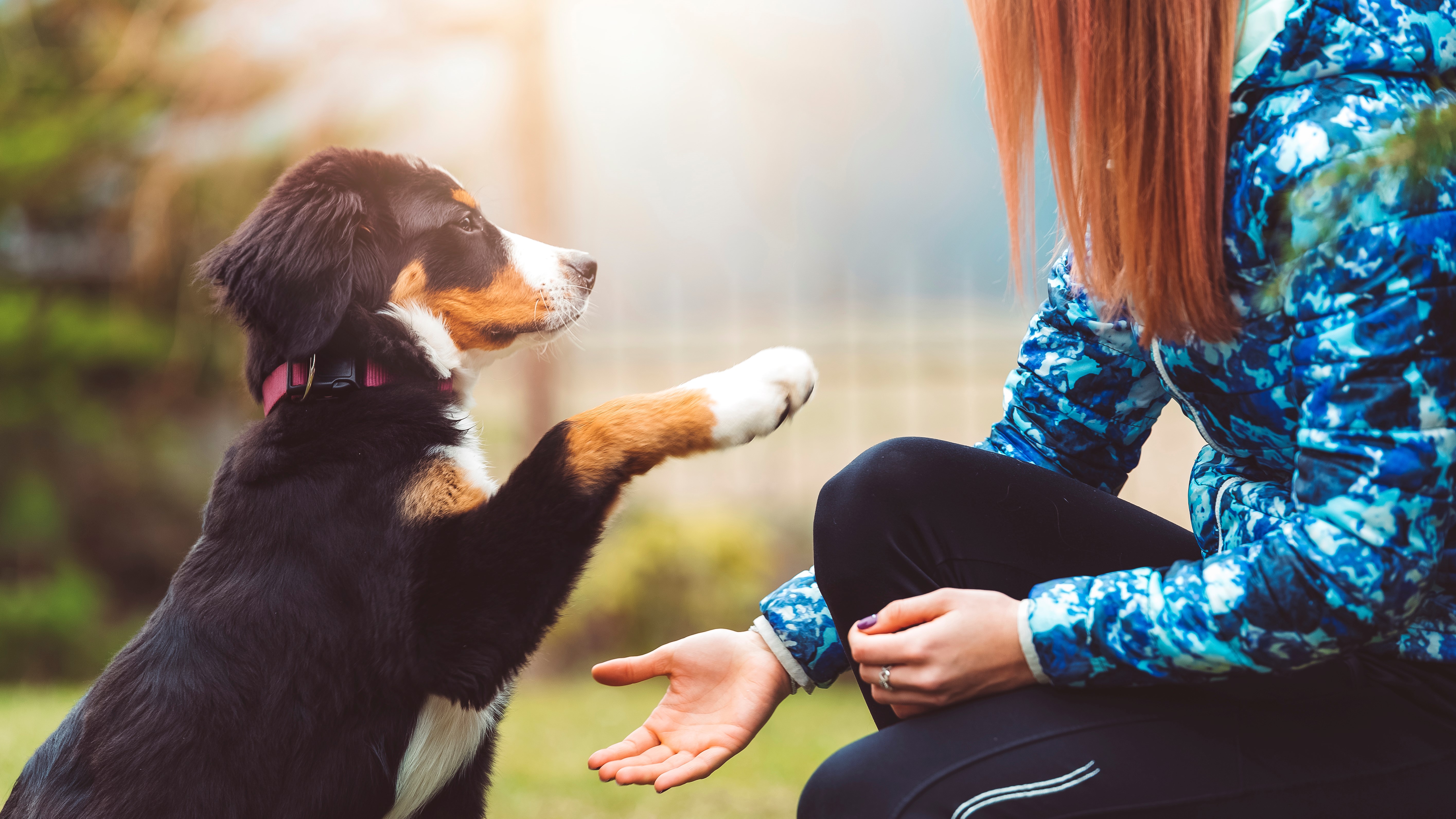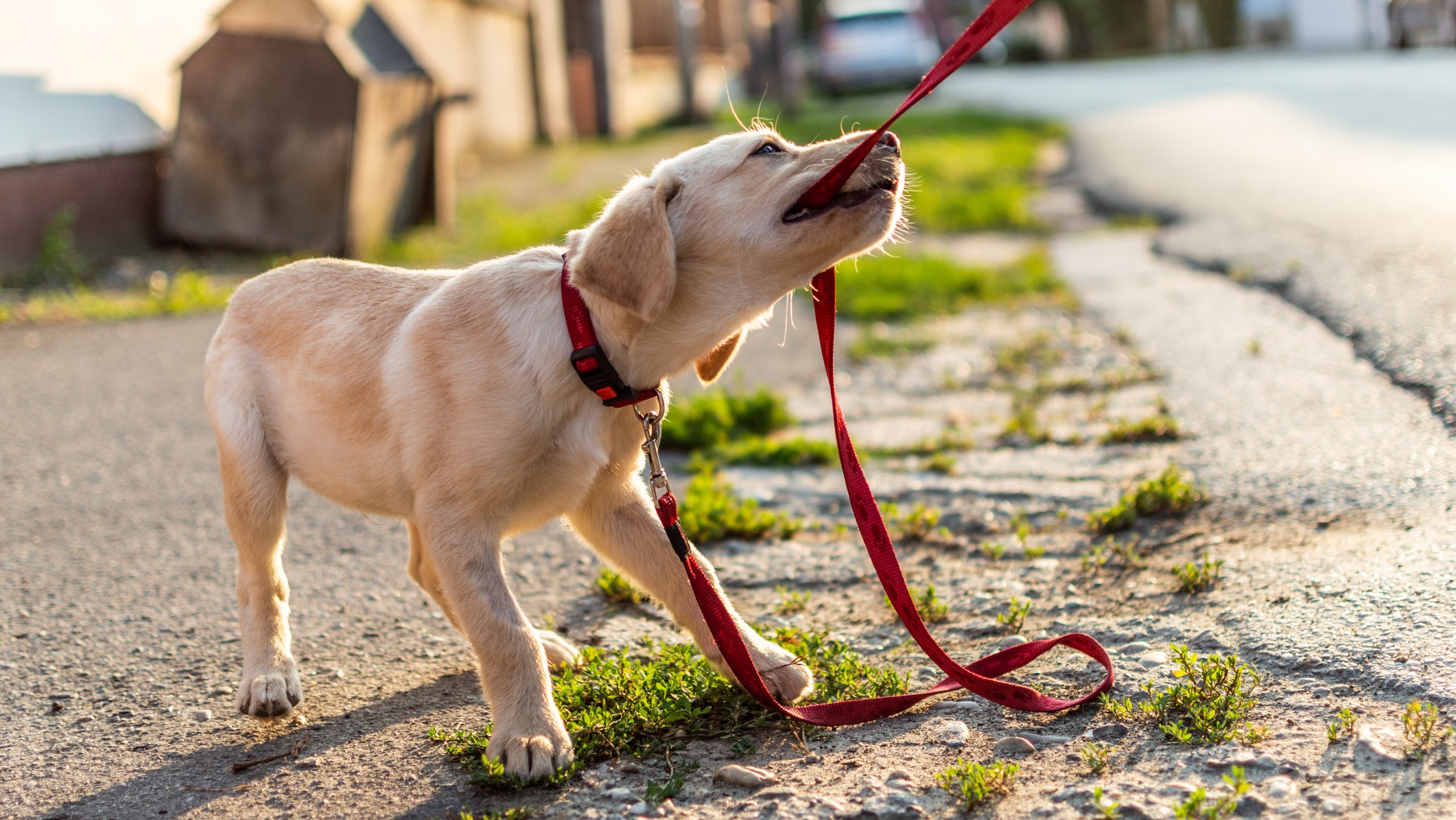Eight tips for training a rescue dog: A vet's guide
Training a rescue dog is a little different to training a puppy, but these tips will help!

If you’ve ever heard the old saying ‘you can’t teach an old dog new tricks’ you might be a bit worried about training a rescue dog. The great news, though, is that all dogs can learn new things, no matter their age! Many rescue dogs come with some partial training, but it’s best to assume you’re starting from scratch. Don’t let that put you off though- the sense of pride and achievement in training an adopted dog is amazing. We’ve put together our eight top tips to help anybody who is training a rescue dog.
1. Get advice from the adoption shelter
Whether the dog has been in rescue for a couple of weeks or a couple of years, it’s highly likely that the staff will have been able to assess your new dog’s needs. Try to get a feel for what your dog likes and what they already know, as well as what they seem to have trouble with and their triggers. Remember, dogs from shelters may or may not have had a difficult start in life- some have behavioral problems, some need lots of training, and some even come with most of their training in place. Your rescue centre is the best resource for finding out what your individual dog needs in terms of training help.
2. Use positive reinforcement only
Positive reinforcement (aka reward-based training) is the most proven method of training any animal. It involves no negative actions or corrections, such as yelling or hitting, just a reward when the correct behavior is shown. Fear causes dogs to forget what they’ve learned, making punishment pointless. In contrast, reward-based learning works well and can even be fun. In fact, it’s even more important with rescue dogs who may have had some severe negative experiences that cause them to shut down entirely if frightened by ‘correction’.

3. Find out what makes them tick
Every dog is different, just like people. Whilst some will respond well to food, others need a game or another reward. Spend some time with your dog and see what they really love. Remember, you’ll need to find a range of rewards that have different levels of value for your dog. Normal kibble might work for a basic reward, but a high-value reward might need to be chicken or freeze-dried liver. Other dogs will want a game of tug, a play with a ball, a cuddle, or some time to stop and sniff.
4. Leave plenty of time for socialisation
When you find your perfect companion in a shelter, it’s easy to get carried away imagining all the cool tricks you’re going to train them to do. But it’s important to remember that dogs from a shelter will come with their own unique fears and concerns. Before you can teach your dog anything, they need to be comfortable in their environment - whether at home or out in the park. Trying to teach a dog to heel whilst they’re panicking at the sound of cars passing won’t work, and attempting recall is pointless if they’re scared of your flapping coat. Deal with your dog’s fears- with lots of love, praise, and help from a trainer before trying training.
5. Small, frequent sessions are better
Remember hour-long lessons at school? And how draining they could be? Try asking a toddler to concentrate for an hour! Just like a young child, your dog’s brain can only tackle small amounts of learning at a time. It’s best to use several short sessions of five minutes or so to teach a skill, rather than pushing your dog for longer. Remember to end a session on a high- when your dog has done something right so you can both feel you’ve achieved something.
6. Step into your dog’s shoes
If your dog is struggling to get a concept, such as toilet training, chewing, or walking to heel, try to see the lesson from their point of view. Often, training fails because inconsistent messages are being given, or because training is progressing too quickly. Try to see where they’re tripping up. Is another member of the family giving different signals or asking for a different behavior? Can you build a middle step into the training to help them understand the expected behavior? Try to compare what they know to what behavior is expected and see where they’re getting confused.
Get the best advice, tips and top tech for your beloved Pets
7. Get professional help if you need it
There’s no shame at all in going to a training class or getting a 1:1 session with a behaviorist, especially when you have a rescue dog. Often, trainers are able to give you new ideas on what motivates your dog and what rewards they might enjoy. They can also explain new ways to train a dog if your usual methods aren’t working. Every dog is different, and some respond better to learning through games whilst others will be more motivated by food. Just make sure that whoever you use is reward-based, your rescue centre may be able to recommend a dog trainer for you.
8. Be realistic about what you can achieve
There’s nothing more disheartening than feeling like a failure and the same goes for dogs. It’s really important that you set them up to succeed. Don’t assume you’ll be able to toilet train a dog in one day. Instead, celebrate that they urinated outside once, then that they urinated outside twice, then that they managed not to have an accident all day. Then that they only went out four times, not six, and held their bladder between each trip outside. By setting small, achievable goals, you’ll both be able to concentrate on the next hurdle.
To sum up…
Training a rescue dog is slightly different to training a puppy, but the same principles of kindness, patience, and reward-based training still apply. Be mindful of your dog’s background and be prepared to change your methods if they’re not working. Your new best friend will thank you for it!
Read next about street dogs
After graduating as a vet from the University of Nottingham in 2016, Dr. Joanna Woodnutt went on to practice companion animal medicine in the Midlands. She quickly developed a love of consulting and helping clients with medical problems such as dermatology, behavior and nutrition - anything that involved helping clients understand their pets better.
Jo started writing about pet health in 2017, realizing that it meant she could help even more pet parents. Since then, she has written for countless online and print publications and is a regular contributor for Edition Dog Magazine. Jo is the director of The Veterinary Content Company, which she founded in 2020. She is also the founder of Petlearnia, a platform that provides pet e-learning courses for pet parents.
Jo now lives in the Channel Islands with her husband Ian and terrier Pixie.

